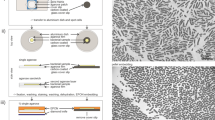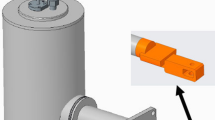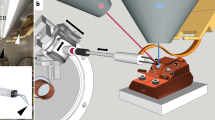Abstract
THE most suitable impregnating resins for ultra-thin sectioning of plant tissue penetrate very slowly to the centre of large masses of cells. This has restricted the range of problems which can be investigated. The following simple technique, an adaptation of that suggested by Luft1, was evolved to embed and section successfully pieces of plant tissue, both meristematic and vacuolated, up to 1 mm.3.
This is a preview of subscription content, access via your institution
Access options
Subscribe to this journal
Receive 51 print issues and online access
$199.00 per year
only $3.90 per issue
Buy this article
- Purchase on Springer Link
- Instant access to full article PDF
Prices may be subject to local taxes which are calculated during checkout
Similar content being viewed by others
References
Luft, J. H., J. Biophys. Biochem. Cytol., 9, 409 (1961).
Millonig, G., J. Biophys. Biochem. Cytol., 11, 736 (1961).
Author information
Authors and Affiliations
Rights and permissions
About this article
Cite this article
JUNIPER, B. Embedding Large Slices of Plant Tissue for Electron Microscopy. Nature 194, 1296–1297 (1962). https://doi.org/10.1038/1941296b0
Issue Date:
DOI: https://doi.org/10.1038/1941296b0
This article is cited by
Comments
By submitting a comment you agree to abide by our Terms and Community Guidelines. If you find something abusive or that does not comply with our terms or guidelines please flag it as inappropriate.



